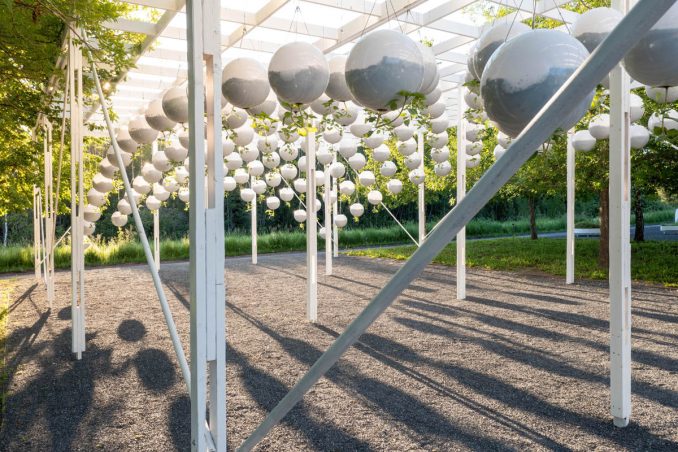
The five new gardens of the International Garden Festival, presented at the Reford Gardens / Jardins de Métis until October 2 2022, are inspired by the theme “Adaptation”, a reality we have been faced, especially in the last two years. To live and survive, humans, like nature, must show adaptation and resilience. Twelve designers from Canada, France and the United States invite visitors to come and reflect on this daily challenge.
Wooden fortresses encircle a few trees to protect them from human assault (Forteresses by Maison029: Eadeh Attarzadeh, urban planner and designer and Lorenzo Saroli Palumbo, architect from Montreal); earthenware rings change colour, as lichen does, to adapt to the conditions in which they are placed (Lichen by Marie-Pier Gauthier-Manes, environmental designer from Montreal and Chloé Isaac, ceramacist, and Victor Roussel, 3D artist from Paris); sunflowers planted upside down, from a ceiling of spheres, turn towards the sky to grow as they should (Gravity Field by Terrain Work: Theodore Hoerr, landscape architect, Kelly Watters, landscape designer and Rebecca Shen, designer from New York); eight planted hills rise to reveal what is crawling under our feet (Les huit collines by ONOMIAU: Noël Picaper, architect from Paris); finely cut wooden slats are assembled in the heart of an intriguing structure to question, those who will cross it, the use of the forest and the space, on the possible cohabitation between the resources of the territory and the human (Forêt finie, espace infini? by Antonin Boulanger-Cartier, Pierre-Olivier Demeule, Melaine Niget, architecture interns from Quebec City).
In addition to the 27 contemporary gardens presented at the Jardins de Métis, a satellite installation, made up of 156 recycled glass bottles fanned out in front of the Centre d’art de Kamouraska, captures the wind from the open sea and emits melodies reminiscent of foghorns: Mer du vent by Emmanuelle Loslier and Camille Zaroubi, landscape architects and musicians from Montreal. Their installation, Miroirs acoustiques, created in 2021, is again presented on the site of the International Garden Festival.
New gardens of the International Garden Festival
FORTERESSES by Maison029 [Eadeh Attarzadeh, Lorenzo Saroli Palumbo], Montréal (Québec) Canada
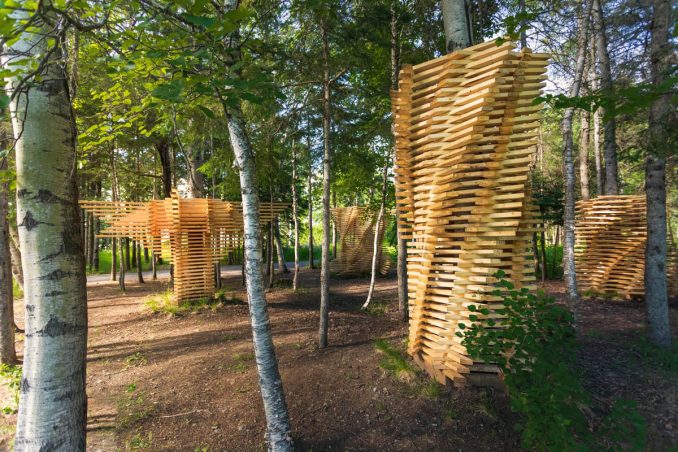
The romantic notion of believing that forests spared from all human contact and interference will thrive has unfortunately been disproven. As long as humanity persists on its present course, it has become unrealistic to expect our forests to defend themselves.
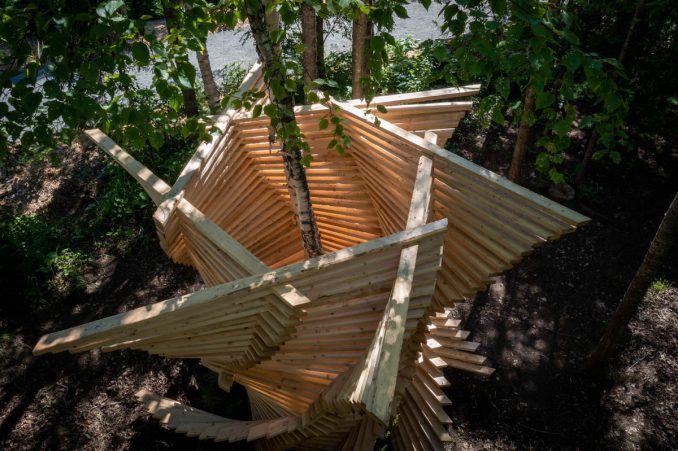
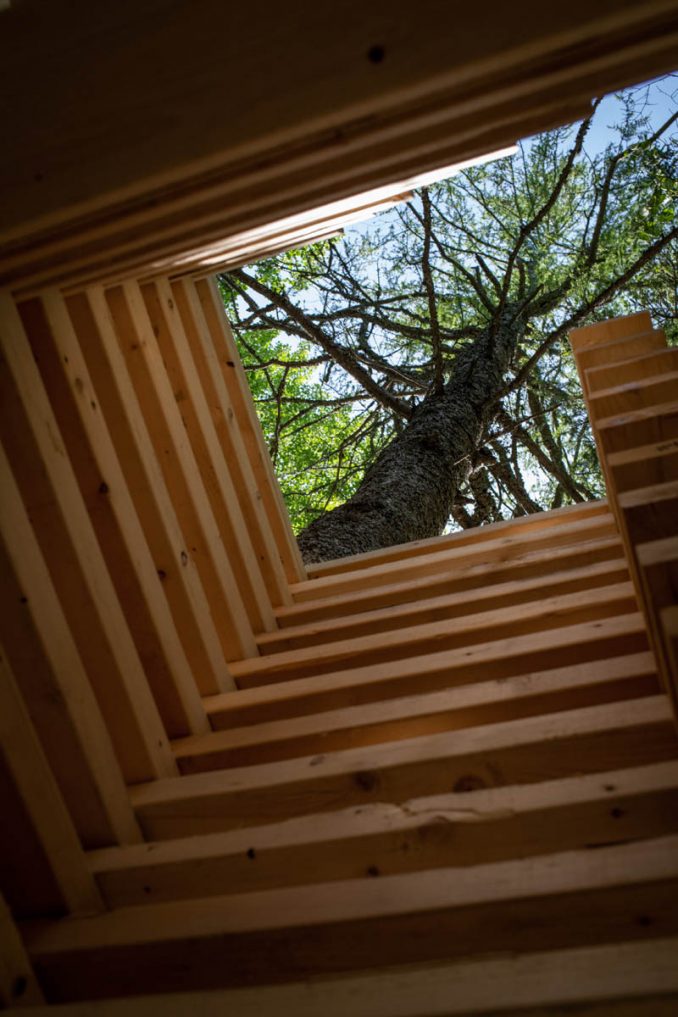
Forteresses is a symbolic intervention within the forest, proposing an aggressive method to protect our flora from its greatest predator: ourselves. The geometry of each modular defensive system adapts to the size, type and age of each tree. Forteresses is meant to be appreciated for the beauty of its geometries in addition to encouraging visitors to question the impact they have on their environment and reminding them that our flora is often unable to protect itself.
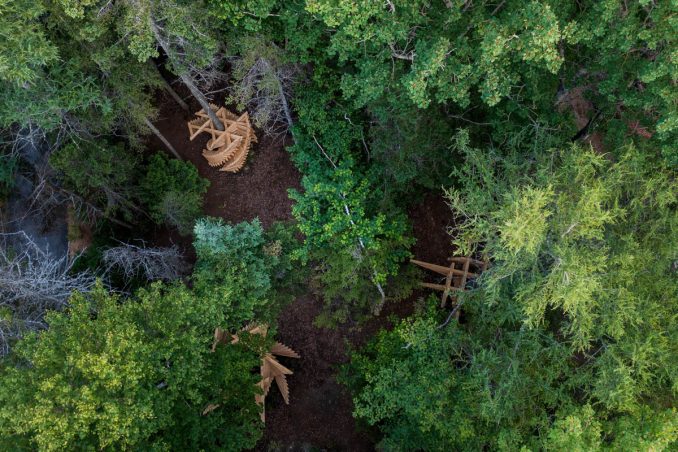
LICHEN by Marie-Pier Gauthier-Manes, Chloé Isaac, Victor Roussel, Montréal (Québec) Canada / Paris, France
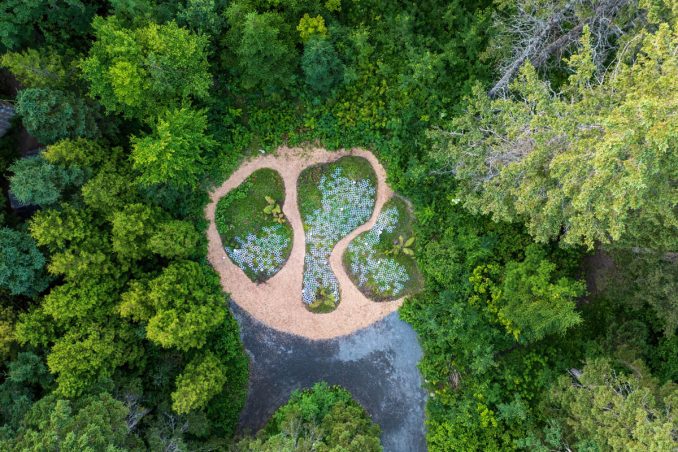

The lichen is a perceptive, malleable and mutable organism. It metamorphoses in contact with the topography, humidity and ambient temperature. Like its namesake, Lichen is sensitive to disturbances in its environment and is therefore a valuable indicator of environmental change. Composed of small, delicate elements, it is nonetheless a cohesive and resistant structure that serves to prepare the ground for other plant species. As we wander between its agglomerations, we observe, otherwise invisible, elements reveal themselves in colourful patterns.

Inspired by terracotta pots, real archetypes in gardens, this installation is composed of 1,200 hand-made earthenware rings that are fired in an outdoor kiln right here at the Jardins de Métis. The drainage and water retention capabilities of this material allow for both a more constant irrigation of the soil and a longer retention of moisture. This environment allows plants that are particularly sensitive to temperature variations and drought to grow peacefully. Its thermochromic treatment changes its appearance according to the temperature to reveal different colours throughout the summer season.
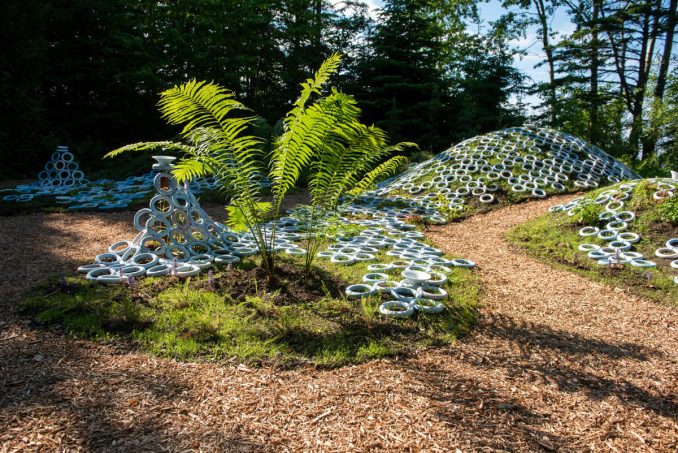
GRAVITY FIELD by TERRAIN WORK [Theodore Hoerr, Rebecca Shen, Kelly Watters], New York, États-Unis
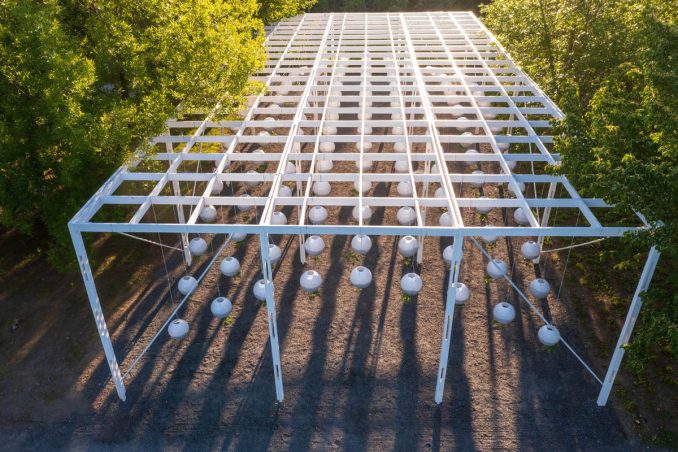
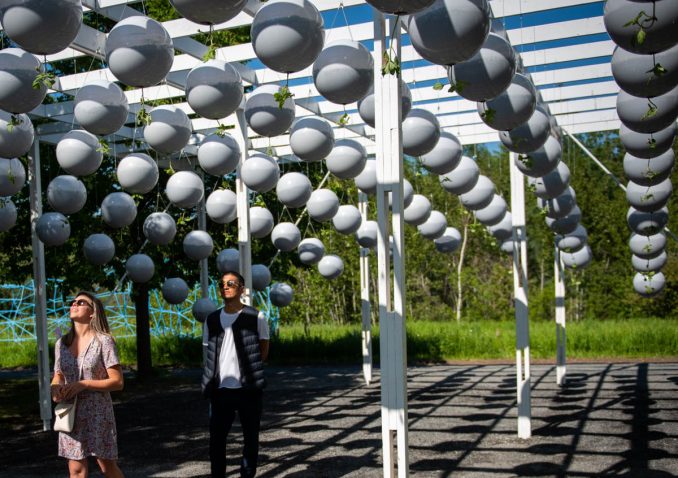
Plants are extraordinarily adaptive. They can thrive in some of the harshest environments on earth by responding to a myriad of stimuli – sun, water, temperature, soil, and gravity – to sustain life. Plants are also essential to human existence, providing sustenance, ecosystem services, and carbon sequestration.
While they play a key role in mitigating the effects of climate change that threaten our existence as a species, they too are also vulnerable and must adapt quickly to a rapidly changing climate. Gravity Field demonstrates the robust adaptation of plants in even extremely strenuous conditions.
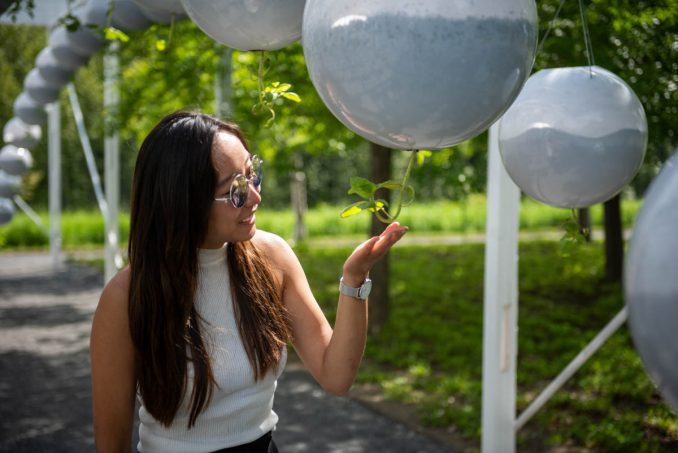
The sunflowers are grown upside-down but will bend up as they grow towards the sun, defying gravity. Visitors can visit the installation numerous times to experience how adaptable plants are to their circumstances: phototropically, gravitropically, and heliotropically. While the future is uncertain, Gravity Field spotlights the powerful resilience of nature and sees optimism in the ability of plants, and all organisms, to adapt and thrive.
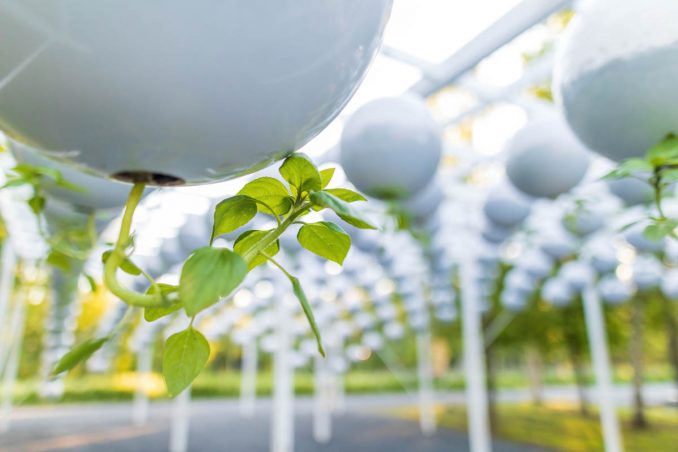
LES HUIT COLLINES by ONOMIAU [Noël Picaper], Levallois-Perret, France
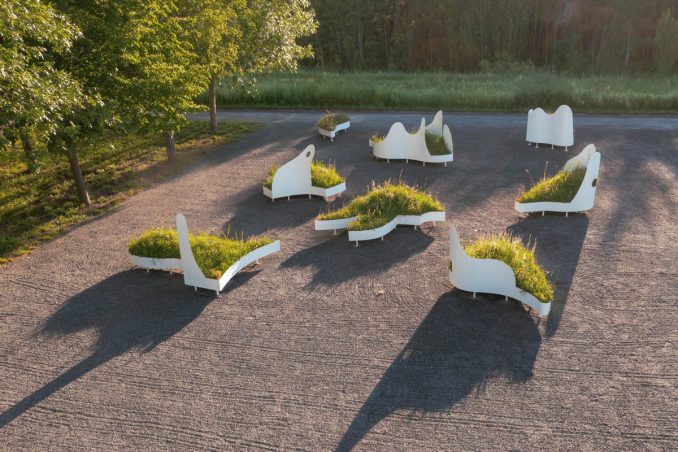
Conceived as evolving structures, those eight hills imagine biological spatialities. Through inanimate and organic materials, they create life effects. A hilly landscape then appears, capable of offering various experiences to humans as well as to non-humans (birds in particular). Serving as a seating area, a micro-garden, a contemplative space and an ecological reservoir, this project offers visitors a multitude of spatial sequences to practice, seating, hiding places and amphitheatre and more.
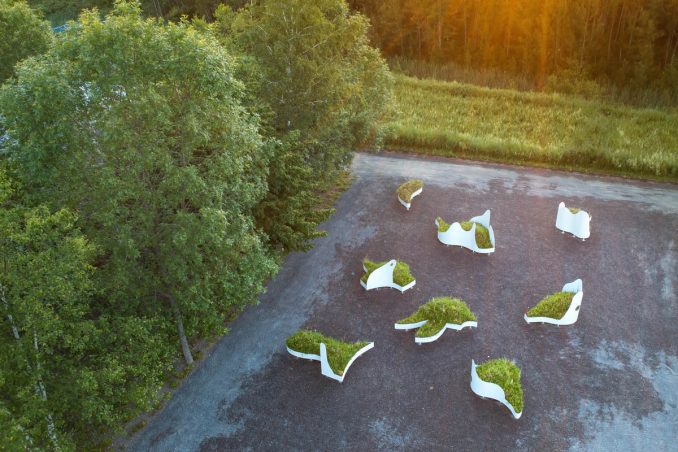
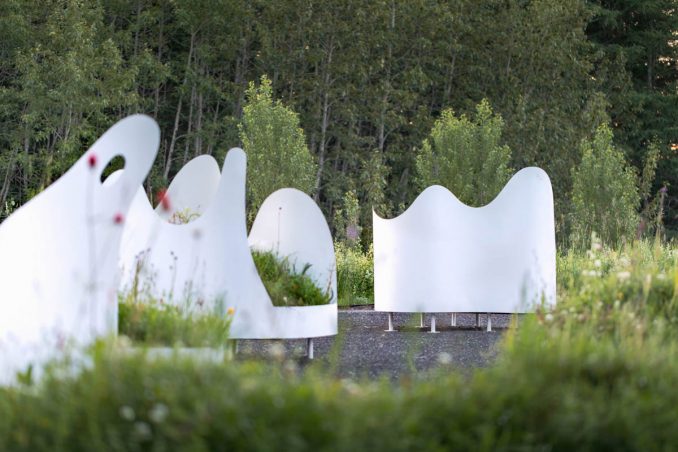
The intention, behind this assembly of surfaces, is to reveal the richness of a whole environment, catalyzing other forms of interactions for various living beings. Dreamlike and supporting functions, this work influences the climate by softening the summer heat with its shades and its flora. Les huit collines thus elaborate a landscape charged with meaning that never ceases to evolve both by its composition and by the cycles of life that it shelters.

FORÊT FINIE, ESPACE INFINI? by Antonin Boulanger Cartier, Pierre-Olivier Demeule, Melaine Niget, Québec (Québec) Canada
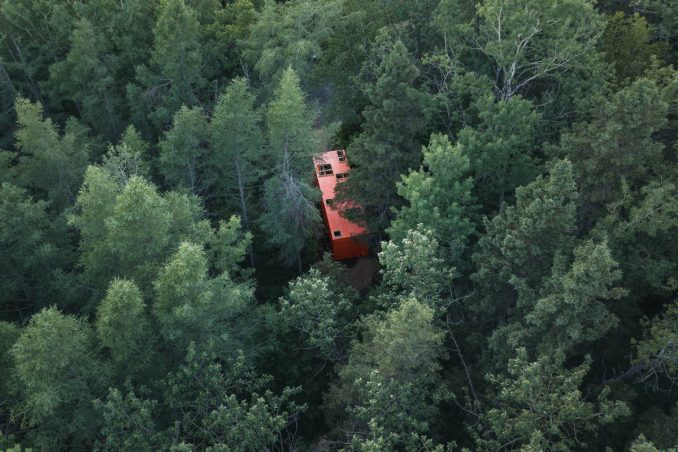
From a distance, Forêt finie, espace infini?, takes on the appearance of a pile of sawn wood that a carpenter might have placed there while waiting for his next project. This defined form covered with a plastic sheeting waits in the summer heat. Rooted in the middle of a path crossing the boreal forest, the installation however obstructs the passage. Without being able to go around it, is it possible to cross it, to face it seems inevitable.
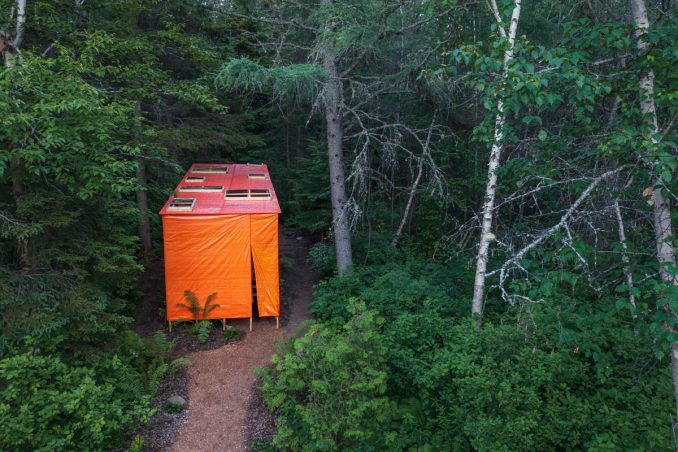
By approaching, a section of the tarpaulin is unhooked, and you are invited to slip into it. Inside, a structure made of finely assembled wooden slats reveals a path modulated by a play of solids and voids. What are all these cleverly arranged slats and why do they seek to reach the infinite? Aren’t they constrained by this tarpaulin that can be seen from the outside? Looking up at the sky, a brief glance at the tall trees suggests a final thought: if the space we build emanates from a world of finite resources and therefore cannot be infinite, could this skillfully sculpted forest able to be?
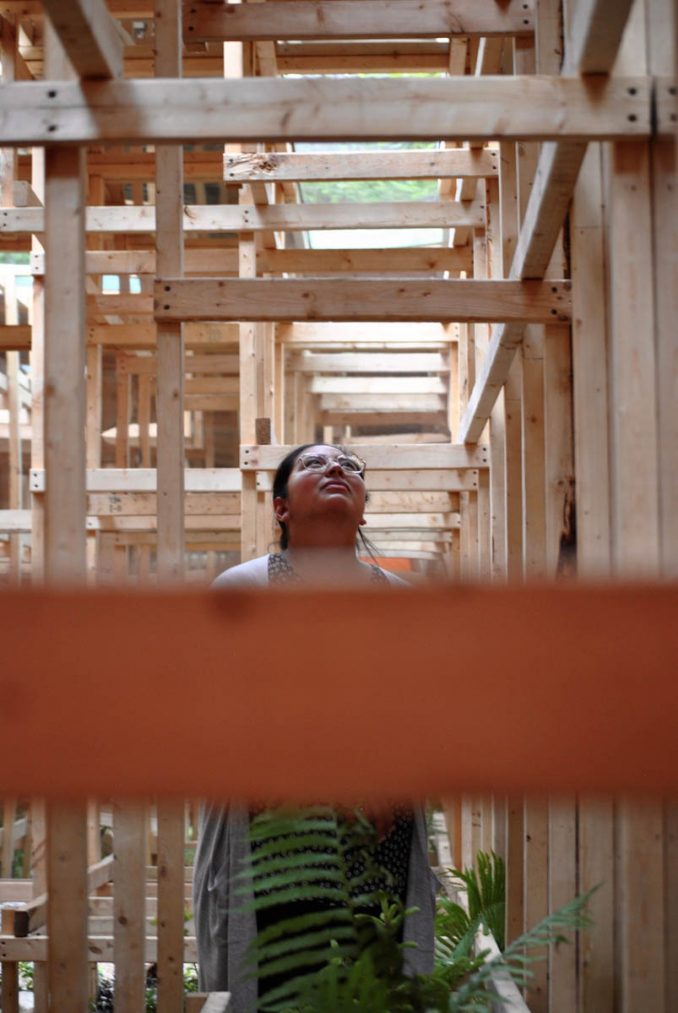
International Garden Festival at Les Jardins de Métis/Reford Gardens will be open daily from 8:30 a.m. until Sunday, October 2, 2022. Admission is free for children 13 years and under. Visit https://jardinsdemetis.com/en/ for full program details.
